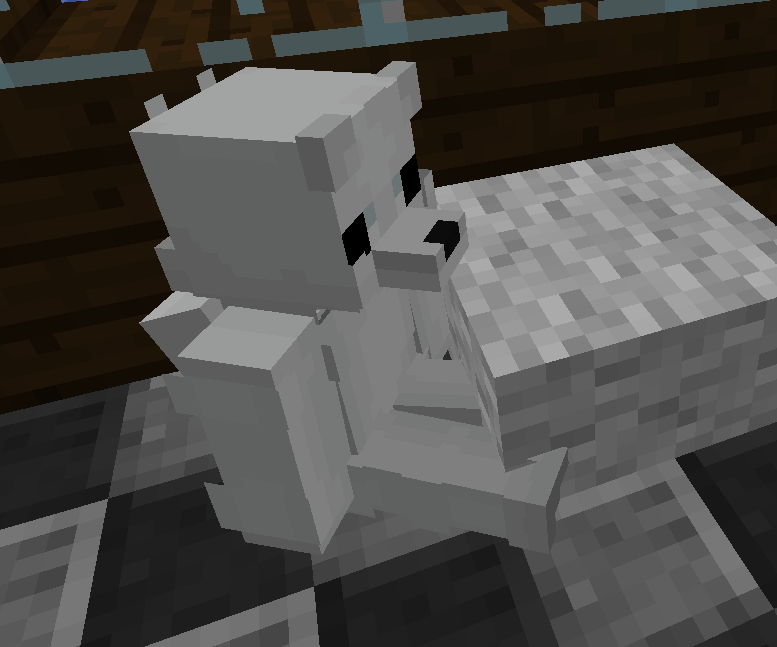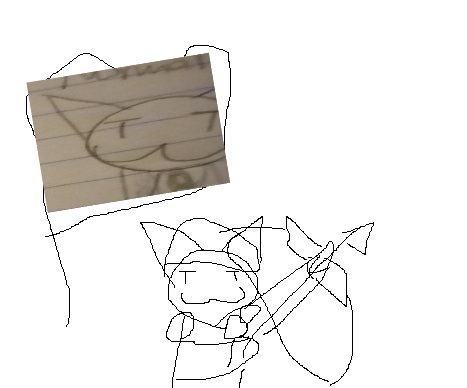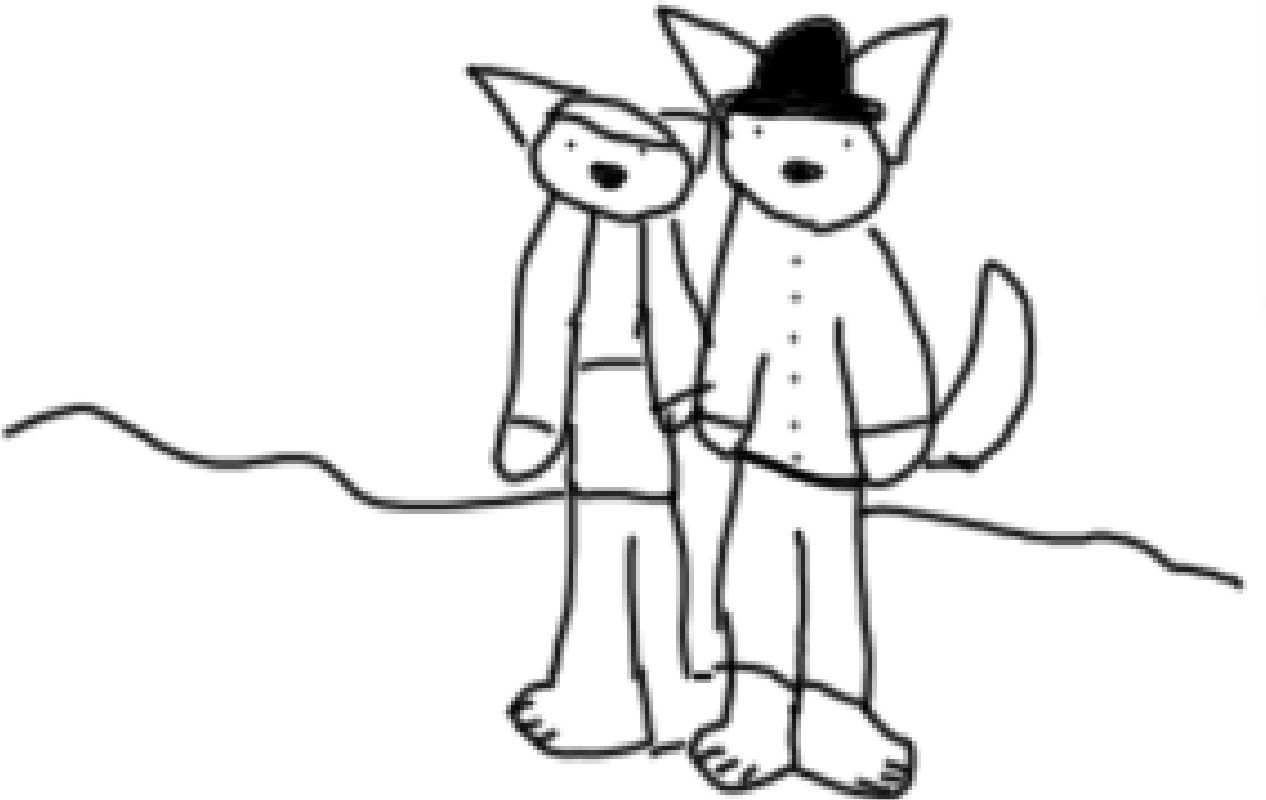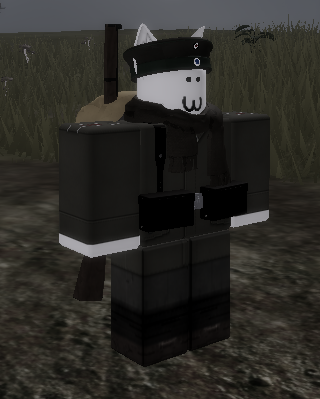Furry (Furry Ferry lore): Difference between revisions
No edit summary |
|||
| Line 52: | Line 52: | ||
But, that was not to last. | But, that was not to last. | ||
== | ==Persecution & Modern History== | ||
=== Germany === | === Germany === | ||
[[File:Furry03.png|thumb|Above: A member of the "Fifth Pelzigesbattaillon" in Winter Gear, June 8th, 1917]] | [[File:Furry03.png|thumb|Above: A member of the "Fifth Pelzigesbattaillon" in Winter Gear, June 8th, 1917]] | ||
Revision as of 14:21, 17 January 2024

Furries (known in other dialects as Pelzigs, Furftypes, Whitehairs, and 'Non-Human Bastards') are a species in the genera Canus pelzigus. They are identified by their thick white fur, humanlike intelligence, relatively tall height and build, as well as their common absence from regular society. According to the Species Index on Ass Blast U.S.A., they are considered an "intelligent species" with intelligence that could possibly equal that of humans, according to recent tests done on their kind.
Furries speak many different languages, but usually, a lot of their own tongues have sounds that humans cannot pronounce, so many furries have been taught either the language of the country they are in, or, possibly, a creole langauge made up of parts of their own tongues and the languages that are used by humans in the same area.
Furries can be differentiated into two main groups: Furfs (who inhabit the tropical archipelago that bears their name) and Trekkers, who inhabit many parts of the world, most importantly areas around Europe. They are commonly called the aforementioned names of Pelzigs and Whitehairs.
The Finding of Earth
According to ancient texts dated to the time of the Roman Empire (which are of dubious historical accuracy), around 330 CE, many people in the Roman government were using pagan and christian ritualized prayers, and the idea behind this was to open up a portal which led them to a paradise, a land that they could move to and escape the Barbarians who were beginning to attack their land further at this rate. A "Robinus the Elder" is listed as the main driving force behind this move, although there are no sources on who "Robinus the Younger" is.
Contrary to all expections, however, one of these rituals worked, and in the area that is modern-day Belgium, near the Germanic Line, a green portal opened, and one of the men was dragged inside the portal by a white hand. The many other soldiers guarding the portal ran after him, and they found themselves in an area alien to them all, full of vibrant, lush forests, mountains, hills, and prairies. They very quickly began to contact an almost sapient-looking group, who were much taller than them and had themselves a large pair of eyebrows and a large mouth. An empire which was known in the area were the Franks, and, upon the contact between these two groups, the expansionist Franks began to send army after army through the portal. The Romans were pushed out as the armies began to ransack the countryside, razing and burning Roman towns and cities to the ground.
Constantine I (The Great), after hearing of the invasion, was so shocked at the oncoming armies, that he died on the spot after hearing the news.
The Invasion of the Franks

The Franks, as previously mentioned, were a group of (likely) Furries who invaded the lands of Germany and the Low Countries during the Roman Empire period.
The Frankish Empire were known for their ruthlessness in conquest. The area that they had previously occupied was all abandoned, and they focused all efforts on moving into the new land that they found. After about 10 years of conquest, they had set up completely new towns over the ancient Roman towns and had completely settled all the area around modern day Belgium.
After taking the land, they noticed the Germans, whom many of the Germanic nations in the region began to ally with the Franks to begin to barter with the ruthless new enemy. Many alliances were formed, in which the Germanic tribes began to offer human sacrifices to the Franks, and the Franks offered them technology that they had never seen before.
Their land empire began to grow rapidly, with these alliances and trade groups beginning to form the peak of the Frankish Empire, approximately 350-380 CE, where the Franks and their subjugated states controlled Belgium, the Netherlands, Germany, Poland, and Austria.
In the year 381, according to more accurate sources, the Franks (sometimes called the Huns) used the German-bought horses and launched a full-scale invasion of the Roman Empire. The Romans armed themselves to kill the Frankish Empire or die trying. This all culminated in the Battle of the Yoxilian Plains, near Yoxil, an old town known to also have portal activity. The Romans launched a desperate charge which routed the Franks and their Germanic and Nordic allies.
They were forever locked out of actually controlling the land of Rome, but they had greatly weakened the stability of the Empire, which would collapse less than 100 years later. Shortly after the failure of the Frankish invasion of Rome, many prominent merchants of the Franks, as well as political and military heroes from previous wars, began to divide up the land between different vassal kingdoms, where the Germanic kingdoms began to still follow a similar tribute system to that of the previous Frankish system.
The Middle Ages
This time in the history of the Furries is very dubious. It became clear after this point that the two groups began to diverge. During the 6th century (500s AD) the Franks began to lose their prominent "strong" features, and began to turn to looking more like a "white wolf" in their appearance. Towards the last few Frankish states that remained in modern-day Belgium and modern-day England, their large strange-looking boats allowed them to travel to lands previously unknown to Europeans. According to oral traditions passed down from nations living in North America, South America, and Africa, many talk about visitors who looked like "coyotes" or "dingoes" that traded with them and had friendly contact.
However, the most important area that these traders found were the islands of the East Indies, which they started trading with the people in that area to the point where they began to set up trading outposts upon islands within the area. Many left for months at a time to go to these trading outposts, which left the original cities abandoned and these new cities in the Indies populated with Furries.
In this time, they pushed inland, and formed a new community of islanders populating the archipelago region of Indonesia, taking over large amounts of area from the original inhabitants, who began to migrate eastward (in the form of the Micronesians and the Polynesians) to escape their growing states. (See Article: Furf)
The merchants that stayed in Europe, however, were not as lucky as those who picked up their belongings and travelled to the new land. The people began to regain control over the land, and the Furries that remained were forced to migrate around and fight with each other in their small villages, similar to the "Gypsies" or "Romani" that would migrate to Europe in the centuries later. History would continue with their isolation, with the formation of the Holy Roman Empire and the evolution of growing Cities making the Furries finding ever shrinking territory. They did not wish to leave their homeland, however, so they stared there, although some made the trek to live in Poland or Russia.
During this time period, stigmatizations about the group would be made, mostly involving their features being greatly different to that of Humans, and their weird ways of speaking that evolved separately from humans.
The History to World War I

Up until very recently, most Furry groups have maintained their isolation. In France, Furries were officially banned from the country in 1833 which made them flee to other nations. This Furry Ban led to the Furries, still quite a nomadic group, beginning to cooperate with the German government, sending some of their own to fight against the rivals of Prussia, due to the fact that Prussia was the only government that supported the continued existence of the Furries in Europe. In 1874, this relation became further, with the establishment of the Pelzigesbattaillon (Furry Battalion) in the Imperial German Army, and eight more Pelzigesbattaillons followed leading to nine different Furry-led armies in the timeframe.
In other places, around 1878, a migrant crisis began in the United States of America. A few began to go as stowaways into ports like New York and Boston, and, from there, they scattered out into the countryside, into vast forests. In the many secretive organizations of Furries, the United States was considered good ground for them to live peacefully, however, that was just not to be. After the invasion, they populated in great numbers the Midwestern States and the Northern states of the U.S. South. They got into many conflicts with the settlers in the region, which led to a 12-year-old extended war known as the Pelzig War until negotiations with the German Empire and other "Furry-supporting" countries allowed them to stop.
Now, not only were the Furries considered savages and bandits, but they were also considered German spies, giving information to the Kaiser.
With the establishment of these battalions, the Germans and the Russians, their closest ally at the time, were able to actually research the Furries as a group within their countries. In 1888, scientist Hermann Doofenschmirtz, grandson of famed scientist Heinz Doofenschmirtz, established the "Pelzige Forschungsinitiative" (PFI, Furry Research Initiative). This organization was responsible for many books released between the years of 1890 and 1910, which dissected the anatomy of the group, their social structures, and finally began to crack what was considered a misunderstood group.
But, that was not to last.
Persecution & Modern History
Germany

In Germany, the Furries were considered the most supported. In 1914, when the war started, many Furries from the countryside began to make their way to recruiting stations, and the Pelzigesbattaillons were filled with new volunteers. The Fifth Pelzigesbattaillon took part in the initial invasion of France, and, after the stalemate began, five other Pelzigesbattaillon were sent to the frontlines.
They were considered more "expendable" but still "loyal" troops, because of their later found immunity to poison gasses, which made the Germans commonly bring them out when it came to rumoured gas attacks, so that the Entente forces could still be pushed back if they attempted to charge using the cover of the gas.
110,000 Furry casualties are noted in the Record Book of the First World War. Many of the large settlements lost a countless number of their friends and family. When the Germans lost the war, they had thrown about half a million of the Pelzigesbattaillon at the Entente forces, and, despite this, they still lost. They considered it the "Pelzigs sabotaging the war effort".
This led to a great stigma about the group. The National Socialist German Workers' Party (NSDAP), also known as the Nazi party, were one of the first groups to actively protest for getting the Furries out. The SA (the Nazi paramilitary) initaited book burnings of PFI books, and research of the group was considered "bad" because that could get you "collaborating" with these adversaries, who they said wanted to "take away all their land". Many other right-wing groups in Germany also began to excessively pound against the freedom of the Furries, and when this finally came to a head, in 1938, right during the Kristallnacht, when Jewish (and Furry) businesses were being attacked, the official leadership called for them to "LEAVE, NOW, OR ELSE."
80% of all the 2,000,000 furries in Germany fled to other lands. They could not escape the war, because, in 1939, the Germans invaded Poland, and in 1940, the Germans invaded France. The large populations of both refugees and citizens of Furry species descent within these lands were part of the Holocaust, where they were rounded up and killed by the Nazi War machine, alongside many other groups targeted by the group.
"I consider it a great tragedy," Jonathan Ester, the current leader of the World Furry Pelzig Organization (WFPO), said. "My family descends from the forefathers that we left behind in Germany, Poland, Russia, Ukraine, France, Italy... most of them are gone now. We fought for their war effort in the Great War, we gave them everything that we had. They never wanted peace with us anyways, did they?"
The United States of America

